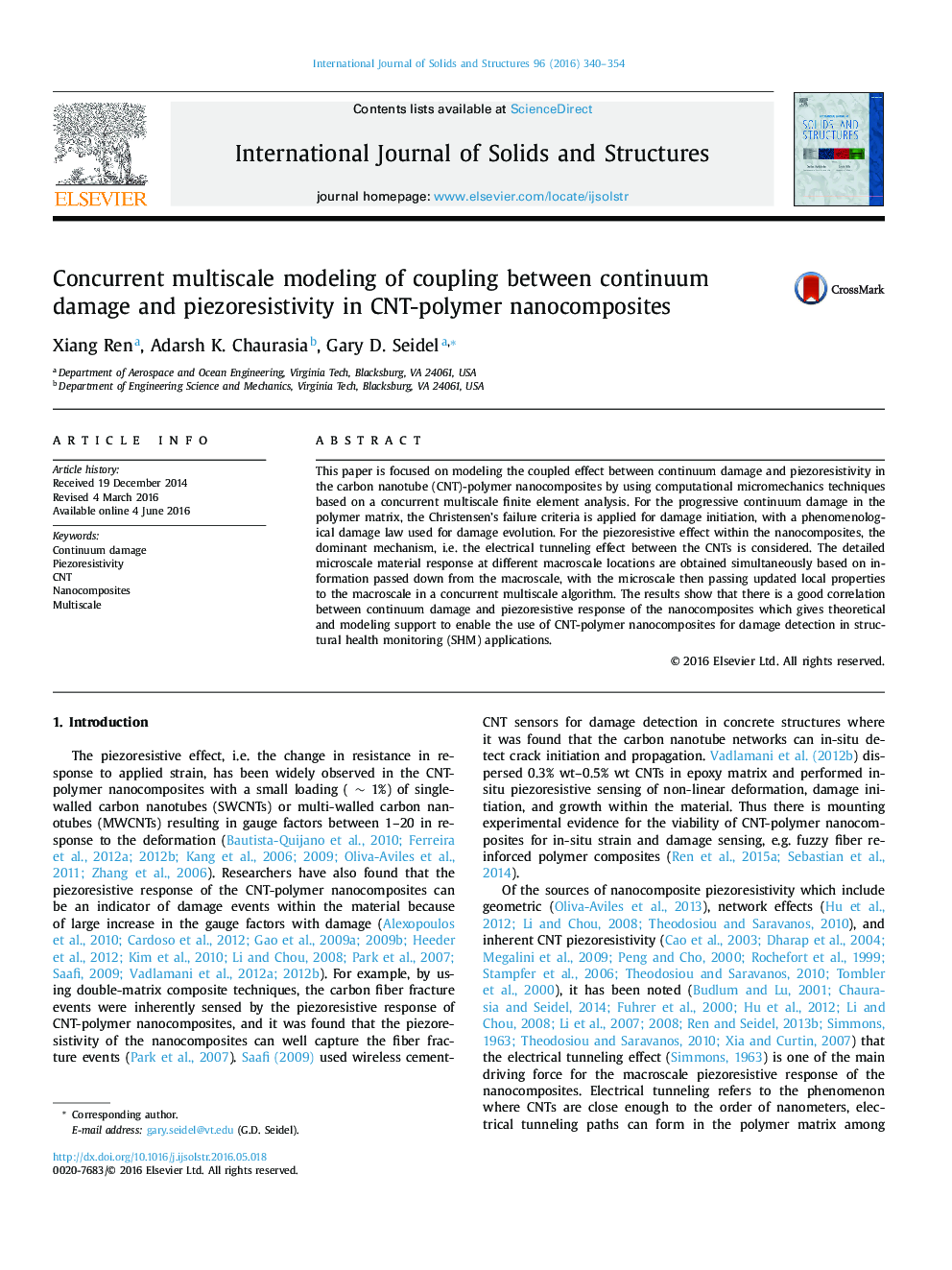| Article ID | Journal | Published Year | Pages | File Type |
|---|---|---|---|---|
| 277084 | International Journal of Solids and Structures | 2016 | 15 Pages |
This paper is focused on modeling the coupled effect between continuum damage and piezoresistivity in the carbon nanotube (CNT)-polymer nanocomposites by using computational micromechanics techniques based on a concurrent multiscale finite element analysis. For the progressive continuum damage in the polymer matrix, the Christensen’s failure criteria is applied for damage initiation, with a phenomenological damage law used for damage evolution. For the piezoresistive effect within the nanocomposites, the dominant mechanism, i.e. the electrical tunneling effect between the CNTs is considered. The detailed microscale material response at different macroscale locations are obtained simultaneously based on information passed down from the macroscale, with the microscale then passing updated local properties to the macroscale in a concurrent multiscale algorithm. The results show that there is a good correlation between continuum damage and piezoresistive response of the nanocomposites which gives theoretical and modeling support to enable the use of CNT-polymer nanocomposites for damage detection in structural health monitoring (SHM) applications.
